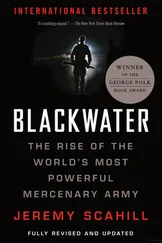A UN cable from June 2006, containing notes of a meeting with senior State Department and US military officials from the Horn of Africa task force, indicated that the United States was aware of the ICU’s diversity but would “not allow” it to rule Somalia. The United States, according to the notes, intended to “rally with Ethiopia if the ‘Jihadist[s]’ took over.” The cable concluded, “Any Ethiopian action in Somalia would have Washington’s blessing.” Some within the US government called for dialogue or reconciliation, but their voices were drowned out by hawks determined to overthrow the ICU.
US Special Operations teams had long been in Ethiopia, training its notorious Agazi commando units. The country also had US air assets and small pop-up military facilities where the United States had access. But, although Ethiopia would play a huge role in the events to come, another of Somalia’s neighbors would provide the launching pad for JSOC’s forces. The US military began building up Camp Simba in Manda Bay, Kenya, which was created shortly after the Black Hawk Down disaster. Although its original intent was to train and assist Kenyan maritime forces along the Somali coast, as the ICU rose to power and the United States began drawing up contingency plans, the base at Manda Bay took on a different role. JSOC teams, particularly members of DEVGRU/SEAL Team 6, began setting up shop. Their presence was thinly masked by the US military’s civil affairs units that mingled with the locals—rebuilding schools and creating water purification projects—and trained conventional Kenyan forces. It was from Manda Bay that elite US hit teams would stage any potential operations inside of Somalia. The men who would be tasked with this mission were classified as Task Force 88.
Almost from the moment the ICU took power, the Ethiopians were salivating over the possibility of intervening. Since the two countries had fought a nasty war in the 1970s, the Ethiopian military regularly crossed the border into Somalia, angering locals. Somali militants, who viewed the Ogaden region of Ethiopia as their own, conducted raids and attacks inside Ethiopia. After the ICU took power, Addis Ababa took the opportunity to ratchet up its rhetoric about the threat of Somali jihadists across the region. As Qanyare fled Mogadishu, he went on national radio to warn that the ICU’s victory would result in an Ethiopian invasion, saying that Somalis were making a huge mistake by supporting the Courts. “I never, ever supported Ethiopia to land in Somalia,” Qanyare recalled. “Over my dead body, I never accepted that. Because I know who they are, what they want, what they are looking for.” A month after the ICU took power, US diplomats began noting reports of “clandestine” Ethiopian “reconnaissance missions in Somalia in preparation for possible future operations.”
The United States “had already misread the events by aiding heinous warlords. And they misread it again,” Aynte told me. “They should have taken this as an opportunity to engage the ICU. Because out of the thirteen organizations that formed the Courts, twelve were Islamic courts, clan courts who had no global jihad [agenda] or anything. Most of them never left Somalia. These were local guys. Al Shabab was the only threat—that was it. And they could have been controlled. But again the situation was misread and Ethiopia was essentially being urged by the US to invade Somalia.” For al Qaeda, he said, “it was the break that they were looking for.”
Malcolm Nance, a twenty-five-year veteran of the US intelligence community’s Combating Terrorism Program, spent the bulk of his professional career working covert ops in the Middle East and Africa. He studied the rise of al Qaeda and al Shabab and was familiar with the leadership of both organizations. Nance told me he believed that the United States dramatically mishandled its counterterrorism approach in Somalia. Prior to the rumors of an Ethiopian intervention, he said, al “Shabab was a sideline organization, they were fringe.” Nance believed the United States should have tried to work with the ICU and work toward isolating the foreign al Qaeda operatives. “As an intelligence guy, here is what I would have done [with an al Qaeda figure]: Leave him there. Get as many assets as close to him as possible. Put resources on him and all of his lieutenants there. Find out as much as possible. Find out what the real depth of al Qaeda is there. Then he will have an unfortunate accident on the road—you know, a lorry hits him from the front.”
Nance believed that, given the clan-based power structure that ruled Somalia—and its repeated marginalization of foreign agents and widespread rejection of foreign occupation—the United States could have waged a propaganda war against the relatively small number of al Qaeda operatives around the Courts to “break their mindset, break their reason for being.” “Wouldn’t it be a lot more fun to brand al Qaeda as a non-Islamic cult? And to the point where people won’t sell them bread, to where when they go out in a battlefield, people will fight against them.” US intelligence, he asserted, should have run disinformation ops to portray them as “Satanists or people who are anti-Islam.” He added: “We should have gone after them that way, and that would have helped every dimension of breaking the organization.” The potential for any success from Nance’s proposed strategy is debatable, given the clan system in Somalia and the fierce opposition to outside influence. But it was never put to the test. He called the actual US strategy that followed, “absolutely mind-boggling.”
Like JSOC and the CIA, al Qaeda was closely monitoring events in Somalia. As rumors of outside intervention spread, Osama bin Laden released a statement that made clear al Qaeda had no illusions that Ethiopia was making its own military decisions. “We warn all the nations of the world not to agree to America’s request to send international forces to Somalia. We swear to Allah that we will fight its soldiers on Somali soil, and we reserve the right to punish on their own soil, or anywhere else, at the appropriate time and in the appropriate manner,” he declared. “Take care not to wait and tarry, as some of the Muslims did when they tarried in saving the Islamic government in Afghanistan. This is a golden opportunity and a personal obligation upon everyone who is capable, and you must not miss this opportunity to establish the nucleus of the Caliphate.”
THE ISLAMIC COURTS UNION—and the first period of relative peace to come to Mogadishu—lasted just six months. While US diplomats in the region privately warned their superiors of potentially dire consequences of an Ethiopian invasion and sought to identify paths to reconciliation between the ICU and the internationally recognized transitional government, the Bush administration’s national security team was gearing up for a war to take down the ICU. By late 2006, Ethiopian forces were massing along various points of the Somali border. Although US diplomats expressed concern over the buildup, they seemed unaware that the US military was deeply involved in it.
The ICU saw the writing on the wall. Both Sheikh Sharif, who just months earlier pledged to cooperate with the United States and the United Nations, and Aweys called on Somalis to wage a “jihad” against any invading Ethiopian forces. Dressed in combat fatigues, Sharif would sometimes hold an AK-47 as he made his public pronouncements. “I want to tell the Somali people that they have to protect their country, and their religion,” Sharif declared. “Somalia’s ancient enemy has returned, and therefore I give my order to Islamic Courts soldiers: We are calling you for Jihad in Allah’s way.” In November, as Ethiopia began pushing US officials to back an invasion to unseat the ICU, US officials obtained an “executive order” written in Arabic and purportedly issued by Aweys, who had recently taken on the role of chairman of the ICU. It called for the assassination of sixteen officials of the Somali government in exile, including the president, Mohammed Yusuf, and Prime Minister Mohamed Gedi. Specifically, it called for “martyrs” from al Shabab to “execute the operations using the most deadly suicide methods carried out by mujahidin fighters in Iraq, Afghanistan, Palestine and other countries of the world.”
Читать дальше












